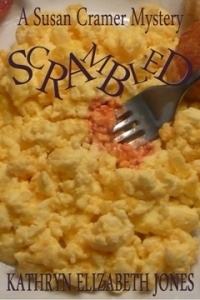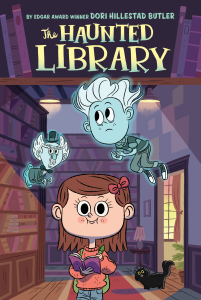Elizabeth Spann Craig's Blog, page 129
October 15, 2014
Add an Element of Mystery to Every Genre
The Secret of the Old Clock…The Bungalow Mystery…The Mystery of Lilac Inn…
I was twelve-years-old when I began reading Nancy Drew mysteries by Carolyn Keene. Nancy not only drew me in to her stories, making me feel like a part of them, she made me feel like one of the sleuths. And if I solved the mystery before Nancy or one of her friends, I felt especially smart.
As an adult, I enjoy writing novels and stories with elements of mystery in them. In 2002, I published my first novel, “A River of Stones.” This book, though not specifically a mystery novel, tells, as part of the story, the understood wanderings of an old man whom every child in the neighborhood knows is a vampire. The main character, Samantha, gets her very best friends to wear crosses around their necks and homespun garlic next to their skin. Of course, the vampire isn’t really a vampire, just like Mr. Green, Samantha’s other old and scary neighbor, isn’t a living scarecrow, though he dressed and moved like one on Halloween.
My short stories usually flicker with some mystery in them as well: In the story, “The Awakening of George Mahooney,” for example, we see the main character, George, awaken from sleep and go about his day as usual. He sits on the rocker and thinks about his life and how old he has become. In the backyard, he regrets he no longer has the strength to pick the weeds. In the kitchen his wife is humming a familiar tune as she cooks his breakfast. George wishes he could be happy, but he is too old. When his wife calls the doctor he is suddenly worried. Is she sick? But George quickly discovers it isn’t his wife he should be worrying about at all—he is the one who’s dead.
I love weaving secrets. I love reading to students those parts of my work that keep them guessing. Is that man really a vampire? That sure looks like a coffin in his basement. But why does a light go on when it’s opened? Why isn’t it lined with red, shiny material?
Because the coffin is really a meat freezer.
Why don’t the flies like George Mahooney anymore? Why aren’t they bugging him in the yard? Why aren’t they landing on him? Why doesn’t he have to swat them every other second?
Because the few that have entered the house have already found his body and George is no longer in it.
More recently, I have written two cozy mystery books, both with the sleuth Susan Cramer. In the first, (Scrambled) Susan has just left her husband hoping for a better life, in the second, (Sunny Side-Up) she has finally taken that long awaited cruise. There’s only one problem in both scenarios. Death.
When it comes to writing a great mystery, there are many elements that have to be kept in check; namely, the plot, the clues, the characters, the setting…
But in every book there should be an element of mystery, yes, even if you’re writing a romance. For the reader should be guessing who the girl ends up with or what caused the boy to actually leave her in the first place.
Yes, until the very end.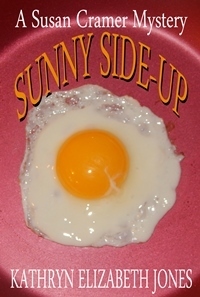
Contact Kathryn at: http://www.ariverofstones.com or visit her on her Facebook author page: http: www.facebook.com/kathrynelizabethjone...
The post Add an Element of Mystery to Every Genre appeared first on Elizabeth Spann Craig.
October 12, 2014
Goals: On Setting the Bar Low
By Elizabeth S. Craig, @elizabethscraig
I mentioned a couple of months ago that I’d been going to physical therapy since July for a back issue I’d been having (from sitting. Don’t believe that writing isn’t dangerous).
I’ve been an extremely good patient, if I do say so myself. I’ve done my daily stretches and other exercises. I attended all of my PT appointments.
The only time I balked was early last month when my physical therapist asked me to start going to the gym to use the weight machines. As soon as Carol finished her sentence, I was ready with excuses. I have no time. I’m on a deadline. I don’t enjoy being around large groups of people. I don’t enjoy exercising. I don’t understand the exercise machines. I’m a clumsy person. I don’t have an appropriate workout wardrobe.
Carol, to her credit, steadily watched and listened as I explained my obstacles. Then she asked, “Do you have a gym membership?”
“Yes,” I answered miserably.
“The staff will be happy to explain how the machines work,” she said.
“I know they will. I have to ask them every time I go in there,” I admitted. “I can’t ever seem to get the knack of it.”
And here was the key: “Elizabeth, I only want you to go one day a week. For twenty minutes.”
Oh, the relief. I’d thought she was going to ask me to go three days a week. Surely I could manage one day, even on a busy week. And twenty minutes wasn’t very long.
So I took my husband with me and he showed me how to use the weight machines again. I took pictures of the machines that my therapist had asked me to use. My husband took pictures of me using them so that I could remember how to correctly exercise. I made a small investment in some workout clothes and tennis shoes since my casual clothes were really just for yard work.
And I found that by setting the bar really low, I did go to the gym once a week. I discovered that doing the exercises only took 15 minutes, not even the 20 that Carol indicated. The exercises helped my back so much that I started going twice a week (most weeks). I still didn’t like it. I still didn’t want to drive over there, wait for the machines, deal with crowds, or exercise. But I liked the results.
Whenever I’m asked in any kind of interview or panel what advice I have for new writers, I say “set the bar low.” If I’m at a panel, this makes the audience laugh. But I’m not going for laughs, I’m totally serious.
Set a completely accessible goal. I’ve set a temporary one as low as 5 minutes a day before when life escalated out of control on the busy scale. You can do more in 5 minutes than you think…especially if you make a note at the end of each session explaining where you left off and what you want to accomplish for the next session. The point is that you’re setting aside time for your story. You’re keeping a habit. In many ways I think the habit becomes more important than the word count. I read an interesting post on the importance of the writing habit a couple of years ago on writer Karen Woodward’s blog: “How To Write Every Day: Jerry Seinfeld And The Chain Method.” This is a method where you self-motivate by marking an X on the calendar for each day you meet your goal.
In the past several years, I’ve found that 3 double-spaced pages was workable. But my writing goal originally started out as a page a day back when I had a toddler in the house and only about 15 minutes to write.
Whatever we put down on paper can be fixed later. A series of “wins” where we meet daily goals can motivate us to continue our writing habit.
It may be difficult to find that time. We may not like it. But we’ll like the results.
How do you stay motivated to write? What’s been your approach to developing a writing habit?
Image: MorgueFile: Madlyn
The post Goals: On Setting the Bar Low appeared first on Elizabeth Spann Craig.
October 11, 2014
Twitterific Writing Links
by Elizabeth S. Craig, @elizabethscraig

Twitterific links are fed into the Writer’s Knowledge Base search engine (developed by writer and software engineer Mike Fleming) which has over 23,000 free articles on writing related topics. It’s the search engine for writers.
At Frankfurt Book Fair, Little Talk of Amazon: http://ow.ly/CAshR @Porter_Anderson
How to Dramatize Real Life in Your Writing: http://ow.ly/Cd8Hs @birgitte_rasine
Not All Feedback is Created Equal: http://ow.ly/Cd7Y1 @HeatherJacksonW
5 Reasons to Use Content Curation as Part of Your Blogging Strategy: http://ow.ly/Cd86g @karencv
Characters with No Arc? http://ow.ly/Cd82k @beccapuglisi
Create Your Own Imagery Thesaurus: http://ow.ly/Cd8nQ @wherewriterswin
7 Ways to Add Sizzle to Your Next Book Event: http://ow.ly/Cd8VC @elizacross
Historical Novelists: How to Use Literature to Build Your Fiction Vocabulary: http://ow.ly/Cd8w5
Turning Characters into Real People: http://ow.ly/Cd7Kn @RChazzChute
Why 1 Writer Removed Email From Her Smartphone: http://ow.ly/Cd8OP @alexisgrant
Do Not Underestimate NaNoWriMo – 5 Life-Saving Tips for Writers: http://ow.ly/CeRLa @MiaJouBotha
Tricks and Tips for a Successful Children’s Book Launch Party: http://ow.ly/CeSwB @jenmalonewrites
Do as You Like: A Lesson from Michaelangelo: http://ow.ly/CeSua @carynmcgill
Why Taking Writing Breaks is Important: http://ow.ly/CeRQS
Kill Your Darlings For Fun and Leisure: http://ow.ly/CeSaH @emilywenstrom
The Backward Morals of Fairytales: http://ow.ly/CeRWo @JackHeckel @tordotcom
Should You Be Writing Shorter Nonfiction Books? http://ow.ly/CeS0M @ninaamir
Creative Writing Exercises: Couplets and Quatrains: http://ow.ly/CeSoq @melissadonovan
7 Smart Ways to Earn Multiple Streams of Income from a Single Manuscript: http://ow.ly/CeSCh @thecreativepenn
How To Rekindle Your Love of Writing: http://ow.ly/CeSiJ @writetodone
Freelancers: 10 ways to make editors fall in love with your work: http://ow.ly/CeS4X @michellerafter
Keep it Consistent – Settings: http://ow.ly/CeS8h @shay_goodman
Screenwriting: How To Craft Great Action Sequences: http://ow.ly/Chbs0 @screencrafting
How to Use the Snowflake Method to Prepare for NaNoWriMo: http://ow.ly/Chba6 @BCJanetU
12 Vital Preparatory Steps for NaNoWriMo: http://ow.ly/Chbdc @_RobbieBlair_
Google+ For Writers – What 1 Writer has Learned So Far: http://ow.ly/Chbvv and http://ow.ly/Chbyu
NaNo Prep: Prepare for a Creative Revolution http://ow.ly/ChbCF @pinatadirector
How To Find Your Story By Asking Questions: http://ow.ly/ChbJt @inkybites
29 Writing Conferences for Authors, Bloggers and Freelancers: http://ow.ly/Cd7U1 @danasitar
How to Stay Sane While Building Your Writing Career Part Time: http://ow.ly/Cd8gw @aliventures
You Too Can Write Your Memoir: http://ow.ly/Cd8jW @desertplantlove @womenwriters
On the costs of ISBNs: http://ow.ly/CxbkF @Porter_Anderson @TheFutureBook
12 Hardwired Expectations Every Reader Has: http://ow.ly/Cxc9I @lisacron
3 Ways Travel Makes You A Better Writer: http://ow.ly/C9H90 @LiamLowth1
14 Reasons to Never Give Up: http://ow.ly/C9Hsz @colin_falconer
To Write a Book Someday, Share Your Writing Now: @lisavelthouse
Menopause and Writing: http://ow.ly/C9J0a @ScreenwriterSGS @womenwriters
Creating Capacity: http://ow.ly/C9HKB @DanBlank
‘If a goal isn’t serving you, that’s a sign to tweak it.’ http://ow.ly/C9Hkx @K_R_Green
World-Building Errors, as Illustrated by Divergent: http://ow.ly/C9HEv
How Body Types can Help Shape your Characters: http://ow.ly/C9I7Y
5 Steps To Find Your Book’s Ideal Audience: http://ow.ly/C9HOe @angelaackerman
10 Ways to Grab Writing Inspiration: http://ow.ly/C9Iul @Je55ieMullin5
6 Writing Lessons That a Writer Learned From Her Wedding: http://ow.ly/C9Ind @kristanhoffman
Fiction as Art: Going Back to the Beginning: http://ow.ly/C7v7A @carynmcgill
A Unique Way to Develop Conflict in Your Novel for Pantsers: http://ow.ly/C7uAq @beth_barany
5 Ways to Use Goodreads to Your Best Author Advantage: http://ow.ly/C7vdM @wherewriterswin
Persuasive Writing – The Most Persuasive Words: http://ow.ly/C7uw7 @writers_write
Walk the Walk: Accept Critique: http://ow.ly/C7uWR @NicoleLynnBaart
Squeezing out the Stupid: http://ow.ly/C7uOZ @TrueFactBarFact
How to Make Up a Language for Your WIP: http://ow.ly/C7uFD @ava_jae
5 Moral Dilemmas That Make Characters (& Stories) Better: http://ow.ly/C7vO6 @writersdigest
Coming Back to Writing: http://ow.ly/C7uLb @gemma_corden
Are Your Dreams Getting in the Way of Your Writing Goals? http://ow.ly/CqiH8 @annerallen
Emotional Description: 3 Common Problems with Show & Tell: http://ow.ly/C7u77 @angelaackerman
Touch the Hearts of Your Readers: Entangle Their Emotions: http://ow.ly/C7ucA @bentguy1
Disposing of the body in crime fiction: http://ow.ly/CqiuN @mkinberg
Use This Tip to Test if You’re Showing or Telling: http://ow.ly/C7vpk @monicamclark
11 Steps for Your On-Site Book Launch: http://ow.ly/C4ULz @tweetonsisters
5 Expert Tips to Tighten Your Writing: http://ow.ly/C4Um7 @grady_hendrix
5 Ways to Face the Blank Page: http://ow.ly/C57nX @WriterJoMalby
Prepare Your Novel for NaNoWriMo with World Building: http://ow.ly/C55UA @beth_barany
Don’t Listen to Dream Squashers http://ow.ly/C57FY @danasitar
Writing the Romance Novel: 7 Story Beats: http://ow.ly/C4Shy @kayedacus
How to Write a Page Turner Using Movie Trailer Tips: http://ow.ly/C59jO @JanalynVoigt
Will Bookstores Sell Your Indie Books? http://ow.ly/C587S @wherewriterswin
5 Tips to Writing Your Author’s Bio: http://ow.ly/C4URO @djeanquarles
5 Questions to Ask Your E-Book Formatter: http://ow.ly/C5974
How to Destroy Your Initial Idea (& Make Your Story Better) : http://ow.ly/C58Ke @writersdigest
Secrets to Writing for Kids: Hiking Up the Emotional Intensity: http://ow.ly/C58xw @PubHub_blog
Should You Price Your Ebooks Differently in Different Countries? http://ow.ly/C2Y1X @goblinwriter
Adverb Adverse: http://ow.ly/C2Y0I @PBRWriter
The Expository Opening to Novels: http://ow.ly/ClHLP by Jack Smith
Your Scene Needs a Problem: http://ow.ly/C2Y2U @TheKenHughes
Writing with a Day Job: http://ow.ly/C2XPo @LoriRaderDay
Creating Characters We Care About: http://ow.ly/C2YdH @jamesscottbell
How a short story writer became a novelist: http://ow.ly/C2Y64 @mythicscribes
Write Better By Following This One, Simple Rule: http://ow.ly/C2Yfo @joebunting
Setting – Are we there yet? http://ow.ly/C2XZ2 @AnthonyEhlers
10 tips to help writers stay focused: http://ow.ly/C2Y4R @Bookbaby
You Can and Should Self-publish (Here’s Everything You Need to Know) http://ow.ly/C2Y9h @JeffGoins
Target Audience, Benefits, and Filling a Need: http://ow.ly/Ck1Py @SpunkOnAStick
5 Lessons in Publishing Success From Bella Andre: http://ow.ly/C2XHe @Janefriedman
Saying you’re a writer paves the way for a successful career: http://ow.ly/C2XRp @jeffgoins
Novels aren’t movie scripts: how to write great dialogue in prose: http://ow.ly/C2XMZ @Roz_Morris
A Clever Twist on Video and Book Club Promo from Author Neil Gaiman: http://ow.ly/C1y1M @wherewriterswin
5 Facts about Fear for Writers http://ow.ly/C1y3U @write_practice
Making Your Setting as Important as Your Plot and Characters: http://ow.ly/C1yiN @SallyBWrites
Am I Good Enough? http://ow.ly/C1y04 @SusanBakerArt
8 Signs You Are Overdoing Simultaneous Submissions: http://ow.ly/C1y9i @NathanielTower
Is A Pseudonym Right For You? http://ow.ly/C1xMA
The post Twitterific Writing Links appeared first on Elizabeth Spann Craig.
October 9, 2014
With Self-Publishing, We Control the Future of a Series
By Elizabeth S. Craig, @elizabethscraig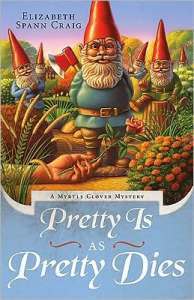
For years, I belonged to several email loops with other traditionally published mystery writers. We would share information and resources with each other and were on a blogging schedule to contribute to the group blog.
Eventually, I dropped out of all of these groups. One of my failings is my lack of patience and another is my overwhelming desire to fix things. These two issues combined with a dose of me-trying-to-be-professional meant that I was constantly biting my tongue while reading messages from these loops regarding author issues with our traditional publishers.
I was especially sad on the occasions when an author would apologize for having their series canceled. They would be in the process of pitching another series to their agent and/or publisher and would offer to drop out of the blog since they weren’t sure if they were going to continue being contracted writers.
I knew that any advice I gave, at least at the time, about them getting their rights to their characters back and continuing their series through self-publishing probably wouldn’t be well-received. But it really shook me to hear them. It was as if they would accept defeat….not be a writer anymore. Because of some whim of the market or the publisher. Or maybe simply because their editor moved on to another publisher, “orphaning” the series. They’d accept this as the inevitable end of their series and sometimes their career. A bad sales record follows writers and other publishers might not want to gamble on them.
Maybe these authors still even had readers for the series. They’d mention that they still got emails or Facebook messages from readers asking about their next book in the series. They’d mention having to carefully word the truth—that the publisher didn’t want any more books.
As you can imagine, this all would frustrate the stew out of me. But I knew these authors were aware of self-publishing. There was an anti-self-pub bias in the loops, actually. I didn’t think they’d find my advice to take their series indie very helpful. I’d complain about this to my husband, who eventually pleaded with me to drop out of the loops—that they appeared to be making my blood pressure rise. :)
And so I did. Frankly, even if my advice to self-publish was well-received, did I really want the competition?
My own experience was similar to those writers who had their series dropped. My first traditionally published Myrtle Clover book was Pretty is as Pretty Dies with Midnight Ink, a division of Llewellyn. After the first book published, it seemed to me to be selling well. I wrote another book for the series and was politely rejected.
In my head, though, it wasn’t over. I had the book. I knew I had readers.
My agent offered to shop the series to another publisher. I decided that was probably going to take too long—that I would have to start over again with a new reader base.
One big eye-opening moment for me was when I was on a book tour and at a panel event with other mystery writers…promoting my new series for Penguin. They opened the floor up for questions and my first question, right out of the gate, was from a reader asking when my next Myrtle Clover was going to come out.
Later on that same tour, I got the same question from another reader at a signing.
It was obvious to me then that I couldn’t just accept that the series was over. That hadn’t been my gut reaction anyway. I had the ability to continue writing as many books as I wanted in that series. What was more, I felt I had something of a responsibility to my readers to do so.
The future of my series depended on my readers and me. It had nothing to do with what was hot, who wanted to contract books with elderly protagonists, or the rapidly changing editors at my publisher. And that knowledge was empowering.
This is one reason why I feel strongly that this is the best time in history to be a writer.
The post With Self-Publishing, We Control the Future of a Series appeared first on Elizabeth Spann Craig.
October 6, 2014
The Expository Opening to Novels
Guest Post by Jack Smith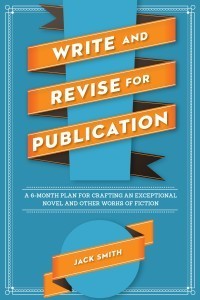
A strong opening to a novel is, of course, important. If the opening is boring or off-putting in any way, the reader is likely not to read on. It is true that some readers will be patient and hope things pick up, but naturally you can’t count on that. There are four basic opening types in fiction: exposition (I mean by this expository prose), description, narrative summary, and narrative scene. They are all used by published writers, and one isn’t better or worse than the others. What’s important is deciding which works best in your novel.
Exposition, as a rhetorical mode, means explanation. Writers are sometimes steered away from an expository opening for fear of mere telling. Who wants to read a long, boring presentation (or telling) of background information setting up the story? Readers want to get directly involved in the conflict; they want to be pulled in. But don’t fear the expository mode—instead, work it to your advantage.
Sprinkle in some vivid description. How about this one from Poe by Lynn Cullen:
“When given bad news, most women of my station can afford to slump onto their divans, their china cups slipping from their fingers to the carpet, their hair falling prettily from its pins, their fourteen starched petticoats compacting with a plush crunch. I am not one of them.”
The dominant rhetorical mode here is expository, but what makes it really work is the colorful description: “china cups slipping from their fingers to the carpet”; “their hair falling prettily from its pins”; “their fourteen starched petticoats compacting with a plush crunch.” This expository opening, then, is given some real flair.
Provide an interesting insight or two. Note this expository opening from Man Martin’s Days of the Endless Corvette:
“We never came to complete agreement about Earl and the Endless Corvette: whether it kept him from going crazy or proved he was crazy from the get-go. Had he lived someplace else, there would have been no doubt, but because of Humble County’s history, we have a higher tolerance than most for craziness.
This is an expository opening, pure and simple. It attempts to “explain” why they never came to complete agreement about Earl and the “Endless Corvette.” Here’s it’s the humor, of course, that transforms mere explanation to something quite funny, and note that Twain-like snapper at the end: “a higher tolerance than most for craziness.”
Create an interesting, compelling background for your characters. If the details you introduce are fascinating enough, exotic enough, or unique in some way, you’ll do fine with an expository opening. Consider this one, from E.L. Doctorow’s World’s Fair:
“I was born on Clinton Street in the Lower East Side. I was the next to youngest of six children, two boys, four girls. The two boys, Harry and Willy, were the oldest. My father was a musician, a violinist. He always made a good living. He and my mother had met in Russia and they married there, and then emigrated. My mother came from a family of musicians as well; that is how, in the course of things, she and my father had met.”
I find this reportorial style engaging. Here are the various family dynamics surrounding this narrator Rose’s life, and I want to know more about her. I want to know more about her mother and father and siblings. Doctorow pulls me in.
Don’t be put off by the expository opening. This kind of opening can capture the reader’s attention if you make it sparkle in some way. Each of the examples I’ve given are first person narrations. It is true that it can be more of a challenge with a third-person omniscient voice, but consider the opening to Toni Morrison’s Beloved, winner of the Pulitzer Prize.
“124 was spiteful. Full of a baby’s venom. The women in the house knew it and so did the children. For years each put up with the spite in his own way, but by 1873 Sethe and her daughter Denver were its only victims. The grandmother, Baby Suggs, was dead, and the sons, Howard and Buglar, had run away by the time they were thirteen years old . . . ”
This is third-person expository prose, and it works because it makes us wonder about “124” and all the characters Morrison mentions—not to mention the suspense hooks of “spiteful” and “baby’s venom.”
Try out the expository method. If you handle it well, it might be your best choice for your novel’s opening.
Jack Smith is author of the novel Hog to Hog, which won the George Garrett Fiction Prize (Texas Review Press. 2008), and is also the author of Write and Revise for Publication: A 6-Month Plan for Crafting an Exceptional Novel and Other Works of Fiction, published earlier this year by Writer’s Digest. His novel ICON will be published in June by Serving House Books.
Prize (Texas Review Press. 2008), and is also the author of Write and Revise for Publication: A 6-Month Plan for Crafting an Exceptional Novel and Other Works of Fiction, published earlier this year by Writer’s Digest. His novel ICON will be published in June by Serving House Books.
Over the years, Smith’s short stories have appeared in North American Review, Night Train, Texas Review, and Southern Review, to name a few. He has also written some 20 articles for Novel & Short Story Writer’s Market, as well as a dozen or so pieces for The Writer. He has published reviews in numerous literary journals, including Ploughshares, Georgia Review, Missouri Review, Prairie Schooner, American Review, Mid-American Review, and the Iowa Review.
The post The Expository Opening to Novels appeared first on Elizabeth Spann Craig.
October 4, 2014
Twitterific Writing Links
by Elizabeth S. Craig, @elizabethscraig

Twitterific links are fed into the Writer’s Knowledge Base search engine (developed by writer and software engineer Mike Fleming) which has over 23,000 free articles on writing related topics. It’s the search engine for writers.
Writing fast and hard: http://ow.ly/BZsf6 @tobywneal
How to Plan Your Book: http://ow.ly/BZsfc @susiemander
How a Book Coach Can Jumpstart Your Writing Career: http://ow.ly/BZqOW @LisaCron
Self-Editing: Spot Checking: http://ow.ly/BZsfj @carynmcgill
Everything You Need to Know About the @Reply: http://ow.ly/BZsfn @AnnieNeugebauer
10 Twitter Tips for Authors (Infographic) http://ow.ly/BZsfs @wherewriterswin
3 Things Your Novel’s Narrator Needs to Accomplish: http://ow.ly/BZsfx @writersdigest
Preparing Your Pitch: http://ow.ly/BZsfz @writerashley
Talents and Skills Thesaurus Entry: Blending In: http://ow.ly/BZsfH @beccapuglisi
8 Ways to Get Motivated and Stay Motivated: http://ow.ly/BZsfJ @skyefairwin @ScribeSage
7 Simple Ways to Declutter Your Writing: http://ow.ly/C1xO3 @JodieRennerEd
Writing Scenes v. Narration: Know the Difference: http://ow.ly/C1xQF @lindasclare
3 Ways Writers Can Make Money from a Blog http://ow.ly/C1xNf @ninaamir
How to Critique http://ow.ly/C1xFI
Pitching Characters: http://ow.ly/C1xVa @PubHub_blog
5 Hard Writing Truths: http://ow.ly/C1xSu @ava_jae
The 5 Attributes of a Successful Ghostwriter: http://ow.ly/BZseW @ImprovisePress
Fallen Heroes: – Creating characters by looking at real people: http://ow.ly/BZseR @MiaJouBotha
Jon Fine Is Leaving Amazon: http://ow.ly/CfCoS @Porter_Anderson @thoughtcatalog
Writers on the Reality of Book Covers: http://ow.ly/BW8a8 @KyraBandte
Goodreads Author Q&A Feature–How to Use it: http://ow.ly/CeO1Y
3 Common Problems with Show & Tell: http://ow.ly/BW8a5 @angelaackerman
Read Memoirs to Understand Character Motivation: http://ow.ly/BW89W @monicamclark
Your Novel in 12 Sentences (With Links Explaining Each Plot Point): http://ow.ly/CfTjO @JoelDCanfield
Adding Flesh to our Characters’ Bones: http://ow.ly/CeMYx @JL_Campbell
An agent on spending money on a publicist: http://ow.ly/BW89t @Janet_Reid
Top Productivity Tips For Writers: http://ow.ly/BW89r @fran_booth @forbes
The Myth of Getting Ahead: http://ow.ly/BW8ab @Write_Tomorrow
Creating story flow: the secret power of cause and effect: http://ow.ly/BW8a2 @karenschrav
What the Lit Magazine Editor Sees (That the Writer Does Not): http://ow.ly/BW89Q @SapphireSavvy
Brainstorming the Hero Before You Start Writing: http://ow.ly/BW6Mb @angelaackerman
3 Techniques to Keep in Mind When Setting the Stage: http://ow.ly/BW89H @JodyHedlund
Blessing Or Curse? The Modern Writer’s Dilemma: http://ow.ly/BW89B @janice_hardy
Defining Your Characters (Or Who Are These People, Anyway?) http://ow.ly/BW89x @JanalynVoigt
Crime fiction stories in which the reader knows more than the sleuth: http://ow.ly/CeKF6 @mkinberg
How to Create the Habit of Writing: http://ow.ly/BTeIM @zen_habits
Want To Sell More Books? Understand Your Readers: http://ow.ly/BTeIK @ebooksandkids
Ignore The Haters: http://ow.ly/BTeIJ @larin20
5 Steps To Work-Life Balance For Writers: http://ow.ly/BTeIH @jacobkrueger
Writing Unforgettable Endings: http://ow.ly/BTeIG @HeatherJacksonW
Writing a Novel That Crosses Genre Boundaries: http://ow.ly/BTeIF @radhikasanghani
An Agent on What You Should Be Writing Next: http://ow.ly/BTeIE @mcorvisiero
Turn Your Blog Into a Book Production Machine: http://ow.ly/BTeIC @ninaamir
To avoid too much ‘telling,’ characters should be allowed to act, react, interact: http://ow.ly/BTeIB @suemoorcroft @womenwriters
4 Common Mistakes Authors Make When Soliciting Reviews: http://ow.ly/BTeIA @trainingauthors
20 Amazing Writing Residencies to Apply for This Year: http://ow.ly/BTeIy @alexisgrant
7 Ways to Educate and Motivate Your Muse: http://ow.ly/BTeIx @joanyedwards
Dos and Don’ts of Queries: http://ow.ly/BTeIw @carynmcgill
How to Use Real People in Your Writing Without Ending Up in Court: http://ow.ly/BQaJx @HelenSedwick
Organizing a Series: Details are Author Gold: http://ow.ly/BQkn4 @UncommonYA
Using Questions To Expand Your Story: http://ow.ly/BQkn3 @nschmiedicker
6 Traits of Strong Characters: http://ow.ly/BQaAI @mythcreants
Want An Irresistible Character? Try An Antihero. http://ow.ly/BQau1 @rsguthrie
How Authors Can Use Listmania to Promote Their Books: http://ow.ly/BQaMK @aBookPublicist
5 Tips for Writing Suspense: http://ow.ly/BQkn0 @KiraPeikoff
Tips to Write Bad Boys in Books: http://ow.ly/BQkmY @good2tweat
7 Point-of-View Basics Every Writer Should Know: http://ow.ly/BQaQc @jodyhedlund
Should you write under a pen name? http://ow.ly/BQkmW @standoutbooks
Bring Some Magic to Your Writing: http://ow.ly/BQkmU @jamesscottbell
Cheerleaders vs Critique Partners: http://ow.ly/BQ9W4 @HeatherJacksonW
20 Marketing Questions Self-Published Authors Must Answer: http://ow.ly/BQkmQ @pubslush
The 66th Frankfurt Book Fair: On A Fast Arc To Publishing’s Future: http://ow.ly/C8jpK @Porter_Anderson @R_Nash
On Writing a Synopsis Before the First Draft: http://ow.ly/BMlHq @ava_jae
10 Things that Red-Flag a Newbie Novelist: http://ow.ly/BMn32 @annerallen
Secondary Characters: An Important Tool in a Writer’s Toolkit: http://ow.ly/BMmMT @AEJonesAuthor
Your sentence’s emphasis: how to use the periodic sentence in your stories: http://ow.ly/BMnyV @KMWeiland
Interesting Characters: You are what you eat: http://ow.ly/BMmZk @mooderino
Could This ‘Magic’ Trick Rescue Your Story? http://ow.ly/BMmmb @Yeomanis
Want to Reach New Heights as a Writer? Learn to Quit : http://ow.ly/BMnfX @kristenlambtx
Write Mysteries for Kids…for the Right Reasons: http://ow.ly/C7H3z @Dorihbutler
Characters in Novels That Are Allies and Reflections: http://ow.ly/BMlOK @CSLakin
Blockbuster Plots: http://ow.ly/BMmHu @plotwhisperer
3 easy scene writing tips: http://ow.ly/BMog1 @lindasclare
The Self-Publishing Revolution Is Only Just Beginning: http://ow.ly/BMn7W @thecreativepenn
How to Write a Book: The 5-Draft Method: http://ow.ly/BMmzr @jeffgoins
How Long Should Your Blog Post Be? A Writer’s Guide: http://ow.ly/BKcjs @joebunting
8 Tips on Finding the Optimum Space for Your Creativity http://ow.ly/BKbOd @WriterJoMalby
The Stay at Home Parent/Writer: http://ow.ly/BKchs @rhondafranz
Nailing Genre by Studying Successful Authors: http://ow.ly/BKcl3 @CSLakin
Guidelines for Writing Novellas: http://ow.ly/BKcf5 @BarbaraMonajem
4 Reasons Cooking Shows Make the Perfect Recipe For Writing Success: http://ow.ly/BKbFb @PENPROSPER1
How to Be Creative: http://ow.ly/BKbVT @WSJ
Career progression for short fiction writers http://ow.ly/BKc1u @smithwritr
Twitter for Authors: Worth it? http://ow.ly/C41u0 @MichaelKelberer
Eminent creativity and everyday creativity–and making time for both: http://ow.ly/BKccW @writeabook
Beethoven’s Daily Habit for Inspiring Creative Breakthroughs: http://ow.ly/BKbKY @GregoryCiotti
Writers’ Police Academy–Undercover Agents: http://ow.ly/C3EIS @authorterryo
How To Deal With Negative Book Reviews: http://ow.ly/BJ6kd @writeonepub
6 Fascinating Character Types: http://ow.ly/BJ6NC @AnthonyEhlers
Writing–are you playing for keeps or just playing? http://ow.ly/BJ6ru @rxena77
Tips for keeping characters consistent: http://ow.ly/BJ6z4 @Shay_Goodman
10 Steps to Launch Your Book Virtually: http://ow.ly/BJ6C9
Revision: An Early Fiction Checklist: http://ow.ly/BJ6wL
The Progression of a Writing Life: Strategy – http://ow.ly/BJ6qW @tspoetry
Cover art–same image on different books: http://ow.ly/BJ6o0 @robinrwrites
When Your Concept Disappears: http://ow.ly/BJ6v0 @storyfix
7 Ways Your Physical Environment Can Help or Hinder Your Writing: http://ow.ly/BJ6ms @aliventure
Digital Revolution Act III: Is Publishing Dying? http://ow.ly/BJ6ub @claudenougat
Crowds and publishing–crowd wisdom elizabethscraig
Revision Tips: Revealing Key Information: http://ow.ly/BJ1i1 @kiersi
5 Tips for Submitting Your Work: Help From an Editor: http://ow.ly/BI39G @Margo_L_Dill
Strong verbs: http://ow.ly/BI34O @writers_write
Book Scams and Other Crimes: http://ow.ly/BI37g @DebraPurdyKong
The Progression of a Writing Life: Rejection – http://ow.ly/BI305 @tspoetry
3 things you need to do at the beginning of your novel: http://ow.ly/BI2V6 @writers_write
How to Journal Your Way to Published Author Status: http://ow.ly/BI35V @ninaamir
The content flood” in publishing results in slow sales for writers: http://ow.ly/C1Bfc @Porter_Anderson @bob_mayer”
6 Tips for Writing Minor Characters: http://ow.ly/BI2WW @robinrwrites
10 Ways to Tighten Your Pitch: http://ow.ly/BI31i @wordsprof
How to Make Social Media Worth Your Time: When Is Enough Enough? http://ow.ly/BI3dp @Janefriedman
5 Reasons to Drop ‘Aspiring’ from ‘Aspiring Author’ – Writer’s Edit http://ow.ly/BI3cu
Balancing your Faith and your Muse: http://ow.ly/BI32B @Shay_Goodman
How to Map Out Your Hero’s Adventure in Your Manuscript: http://ow.ly/BI344 @writersdigest
The post Twitterific Writing Links appeared first on Elizabeth Spann Craig.
October 2, 2014
Goodreads Author Q&A
By Elizabeth S. Craig, @elizabethscraig
I ran across something a few days ago that I thought I’d share here—although I’m probably the last person on the block to find out about this. It’s the Goodreads Author Q&A.
I’m trying to do better about visiting Goodreads. The truth is that Goodreads can be a scary environment for writers. Reviews are especially harsh there and there have been incidents involving author bullying in the past. To be fair, there have also been authors who have behaved poorly on the site.
When I’m on a site like Goodreads, I make it a point to keep a low profile. Otherwise, it’s almost like author intrusion when authors butt into reader conversations.
That being said…when I was recently asked how I’ve been able to garner reviews right out of the gate…it’s been those Goodreads giveaways. And the site is popular with avid readers.
So…maybe engaging in Goodreads on our own patch might be a good idea. I recently read a mention of an author Q&A feature there that I haven’t activated or used. (The post that mentioned the feature was “Five Ways to Use Goodreads to Your Best Author Advantage” by Shari Stauch on Where Writers Win and the whole thing is worth a read.)
I set out to investigate. First, to locate my author dashboard. :) I admit that I don’t find Goodreads user friendly at all. When I login to the site, I’m automatically on a reader-ish dashboard that I don’t want to be on. The link to the author dashboard (if you’ve got one set up there) is https://www.goodreads.com/author/dashboard.
If you scroll down the page, there is a section where you can enable Author Q&A.
When you enable it, Goodreads prompts you to customize a message to readers. They suggest that we set expectations as to how often or quickly we might be checking in with the feature. I used the space to give readers my email address. Maybe they’d rather ask me one-to-one instead of on a public forum, you know? Although my email address is scattered here and yonder, I took the opportunity to share it again there.
Then Goodreads gives us some questions to get us started….for a second, I almost had a heart attack and thought I had 6 q’s in the queue that had been rotting there for months. But no, it was just some standard questions Goodreads automatically sends out.
Since the last thing I wanted was for readers to ask questions only for me to completely ignore them, I checked in on my email notification settings. Good thing I did, because I’d set it up to get no notifications after getting a few too many emails from the site in the past. Here’s the link for you to check your settings: https://www.goodreads.com/user/edit?tab=emails.
More about the feature from the Goodreads site (which is heavily reader-centric, but at least gives us an idea of how it all works).
This is actually the way I prefer interacting with readers—if they want to ask me something, tell me something, praise or complain about something…they just ask me. I’m not in their faces in their Facebook stream or Twitter stream talking about my most recent release. But I’m accessible.
Do you use Goodreads much? The Q&A feature? Giveaways? What are your thoughts on this reader site?
The post Goodreads Author Q&A appeared first on Elizabeth Spann Craig.
September 28, 2014
Write Mysteries for Kids…for the Right Reasons
I write mysteries for kids. I don’t write for this audience because it’s easier than writing for adults. (It’s NOT easier!) I write for this audience because I like it! I like kids. I like kids’ books. I make regular trips to the library to check out new kids books and find out which books are the most popular.
I like to tell stories, but I really like to turn non-readers into readers. Whether they’re non-readers because of ability or interest. As a writer, there’s nothing more satisfying than to receive a heartfelt letter or e-mail that begins, “I never really liked reading before, but then I read your [insert book title here] all by myself.” That’s why I write for kids.
That probably also explains why I write mysteries for kids. Kids who don’t like a lot of other books will often pick up a mystery. Writing mysteries gives me an opportunity to reach the non-reader.
Sadly, I’ve run into a number of writers who want to write for kids for what I think are the wrong reasons.
Some are writers who’ve been writing for adults, but have had a hard time selling recently, so they think they’ll try writing for kids. Because it’s got to be easier, right?
Wrong.
Not unless you really understand the kids market. Not unless you’ve taken the time to read a few hundred children’s books and have honed your skills as a children’s writer.
Others see the success of books like Harry Potter and the Hunger Games and they think there’s money to be made in the kids and/or YA genres. I know a number of children’s book authors who make a modest living at what they do (often after years of study and perseverance), but I’m not sure I know any who are rich. Many of us are able to make a living because we supplement our writing with school visits. In fact, once you’ve sold a book or two in this genre, it’s sort of expected that you will visit schools and talk about how you became an author. But if you don’t like kids or you don’t know how to talk to them, your school visits won’t be very successful.
Still others write for kids because they’ve got an important lesson they want to teach. Do you like to be hit over the head with a moral when you read fiction? Neither do kids. In fact, that’s a good way to turn a kid off reading. Forever.
Honestly, I find it a little bit insulting when someone thinks breaking into the kids market is somehow easier than breaking in to the adult market. There are no shortcuts to publication in any genre. You have to know and understand your market, write a great book that an editor can’t turn down, and persevere. That’s the real secret to publication. In any genre. Perseverance.
Write for kids because you want to, not because you think it’s easy. Write for kids because you like and respect this audience and their books, not because you think you’re going to get rich. Writing for kids is its own reward.
-Dori Hillestad Butler is an award-winning author of more than 40 books for children,  including the Buddy Files, which is a chapter book series about a school therapy dog who solves mysteries. Her books have been on children’s choice and teen award lists in 19 different states. The Buddy Files #1: Case of the Lost Boy won the 2011 Edgar Award for best juvenile mystery. Dori has also been a ghostwriter for the Sweet Valley Twins, Unicorn Club and Boxcar Children series and has written numerous magazine stories, educational materials, plays, book reviews, even characters for one board game and trivia questions for another. She grew up in southern Minnesota, spent the last 19 years in Iowa, and has just recently moved to the Seattle area. Look for her new Haunted Library series for young readers. For more information visit her website at www.kidswriter.com.
including the Buddy Files, which is a chapter book series about a school therapy dog who solves mysteries. Her books have been on children’s choice and teen award lists in 19 different states. The Buddy Files #1: Case of the Lost Boy won the 2011 Edgar Award for best juvenile mystery. Dori has also been a ghostwriter for the Sweet Valley Twins, Unicorn Club and Boxcar Children series and has written numerous magazine stories, educational materials, plays, book reviews, even characters for one board game and trivia questions for another. She grew up in southern Minnesota, spent the last 19 years in Iowa, and has just recently moved to the Seattle area. Look for her new Haunted Library series for young readers. For more information visit her website at www.kidswriter.com.
The post Write Mysteries for Kids…for the Right Reasons appeared first on Elizabeth Spann Craig.
September 27, 2014
Twitterific Writing Links
by Elizabeth S. Craig, @elizabethscraig

Twitterific links are fed into the Writer’s Knowledge Base search engine (developed by writer and software engineer Mike Fleming) which has over 23,000 free articles on writing related topics. It’s the search engine for writers.
Why we need a writing process more than a writing ritual: http://ow.ly/BEH0h @suddenlyjamie
An Australian Digital-Only Publisher Signs Unagented Authors from Around the World: http://ow.ly/C01Mu @Porter_Anderson @stevepvincent
The Challenges of Writing a Sequel: http://ow.ly/BEGSK @StinaLL
5 Reasons Why Your Self-Published Book Isn’t Selling: http://ow.ly/BEHjt @mommifried
15 Essential Films Every Aspiring Screenwriter Must Watch: http://ow.ly/BEGIq @davidcinema
Learning to Love Revisions: http://ow.ly/BEGDg @sherrythomas
Character Talent & Skills: Mentalism: http://ow.ly/BI3b2 @angelaackerman
Balancing your Faith and your Muse: http://ow.ly/BI32B @Shay_Goodman
How to Map Out Your Hero’s Adventure in Your Manuscript: http://ow.ly/BI344 @writersdigest
5 Reasons to Drop ‘Aspiring’ from ‘Aspiring Author’ – Writer’s Edit http://ow.ly/BI3cu
How to Make Social Media Worth Your Time: When Is Enough Enough? http://ow.ly/BI3dp @Janefriedman
“If you breach paywalls, you’re robbing writers.” http://ow.ly/C034n @Porter_Anderson @scratch_mag
10 Ways to Tighten Your Pitch: http://ow.ly/BI31i @wordsprof
6 Tips for Writing Minor Characters: http://ow.ly/BI2WW @robinrwrites
How to Journal Your Way to Published Author Status: http://ow.ly/BI35V @ninaamir
3 things you need to do at the beginning of your novel: http://ow.ly/BI2V6 @writers_write
The Progression of a Writing Life: Rejection – http://ow.ly/BI305 @tspoetry
Book Scams and Other Crimes: http://ow.ly/BI37g @DebraPurdyKong
Strong verbs: http://ow.ly/BI34O @writers_write
5 Tips for Submitting Your Work: Help From an Editor: http://ow.ly/BI39G @Margo_L_Dill
Revision Tips: Revealing Key Information: http://ow.ly/BJ1i1 @kiersi
Digital Revolution Act III: Is Publishing Dying? http://ow.ly/BJ6ub @claudenougat
7 Ways Your Physical Environment Can Help or Hinder Your Writing: http://ow.ly/BJ6ms @aliventure
When Your Concept Disappears: http://ow.ly/BJ6v0 @storyfix
Cover art–same image on different books: http://ow.ly/BJ6o0 @robinrwrites
The Progression of a Writing Life: Strategy – http://ow.ly/BJ6qW @tspoetry
A 3-step writing productivity method: http://ow.ly/BEGrB @cjlyonswriter
Dire Consequences – How to get your characters into trouble: http://ow.ly/BEGPQ @AnthonyEhlers
Self-Publishing a New Edition? Get Rid of the Old One First: http://ow.ly/BEGWU @cathryanhoward
DRM: Dumb or Brilliant? http://ow.ly/BEGFM @HughHowey
The “content flood” in publishing results in slow sales for writers: http://ow.ly/C1Bfc @Porter_Anderson @bob_mayer
18 Common Words to Replace in Our Writing: http://ow.ly/BEGMO @alishuhsaurus
How Has Self-Publishing Changed In The Last 2 Years? http://ow.ly/BEHmT @thecreativepenn @DavidGaughran
What to Expect When You’re Expecting Your First Book Tour: http://ow.ly/BAVLS @llmcneal
Writing the Male POV: http://ow.ly/BAVRD @kayedacus
Does your writing style have bulges? http://ow.ly/BAVsf @RayneHall
The Importance of Comps: http://ow.ly/BAVDn @cathychall
5 Ways to Make Description Work in Your Novel: http://ow.ly/BAVz8 @AnthonyEhlers
How to Write Awesome Kiss Scenes: http://ow.ly/BAVUc @ava_jae
How to Research an Agent: http://ow.ly/BAVoD @ericaverillo
Do your minor characters have their own eccentricities? http://ow.ly/BAV9U @shalvatzis
How to make a reader quickly care about a character: http://ow.ly/BAUXK from The Writing Cafe
Breaking through Writer’s Block: http://ow.ly/BAW2Y @KayKeppler
The Secret to Writing Villains: http://ow.ly/BAVZ1 @emilywenstrom
Fairytale’s Most Wanted: The 5 Most Well-Known Character Types: http://ow.ly/BAUJf @JackHeckel
3 simple ways to get your hero to make a stand: http://ow.ly/ByeKu @amandaonwriting
Is Killing Your Darlings Murdering Your Book? http://ow.ly/ByeSG @robinrwrites
How to Create Walk-On Characters Who Are Memorable (But Not Too Memorable): http://ow.ly/BydJx @KMWeiland
Publishing Is Rotten To The Core: http://ow.ly/BSx4e @DavidGaughran
Plot Your Novel With Mini Arcs: http://ow.ly/ByeuC @Janice_Hardy
4 Steps to Writing Organically: part 1: http://ow.ly/Byehw and part 2: http://ow.ly/Byel4 @melissagmcphail
Publishing Success in the Era of Social Media: Teaming with Fellow Authors: http://ow.ly/Byedj @annerallen
15 Terms Every Indie Author Should Know: http://ow.ly/ByeDV @wiseink
Pretentious Book Snobs: http://ow.ly/Bye9p @impactmagazine
Where to Start Your Story (Exactly): http://ow.ly/ByeHX @mooderino
Uncovering Your Characters’ Deepest Secrets: http://ow.ly/Byeya @NataliaSylv
Tolkien’s 10 Tips For Writers: http://ow.ly/BydLY @writers_write
Tips For Vetting A Book Blogger’s Platform: http://ow.ly/Byer3 @sugarbeatbc
The Real Reason to Write a Book Proposal: http://ow.ly/Bv88A @ninaamir
Option Clauses in Publishing Contracts – friend or foe to an author? http://ow.ly/Bv85S @tinagabrielle
Cadence: Understanding One Quality of Voice http://ow.ly/Bv8ec @jan_ohara
The dangers of flashbacks: http://ow.ly/Bv7Wi @Shirl_Corder
5 Places Writers Can Find Inspiration: http://ow.ly/Bv97R @AlisonPotoma
6 Archetypes Every Novel Needs: http://ow.ly/Bv9bS @BillFerris
Unreliable Narrators: http://ow.ly/Bv8ki @HeatherJacksonW
Big, Beautiful Movies with Sad, Stupid Endings: http://ow.ly/Bv8Pp @speechwriterguy
99 Essential Quotes on Character Creation http://ow.ly/Bv9kv @writingeekery
3 Essential Questions for Better Backstory http://ow.ly/Bv8sb @EmilyWenstrom
5 Essentials for a Successful Writing Retreat: http://ow.ly/Bv8Gj @tweetonsisters
The Character Biography: –Writing more to write less: http://ow.ly/Bv93h @MiaJouBotha
Reassessing what makes our story urgent…and considering the needs of our readers: http://ow.ly/BLMqm @Porter_Anderson
Progressive tense: http://ow.ly/BtLHw @CSLakin
Dealing With Multiple Drafts During Revisions: http://ow.ly/BtLU2 @janice_hardy
12 Writers Who Are Using Google+ in Cool Ways: http://ow.ly/BtLPR @carefulcents
Writing Non-Fiction? Lose the Quotes: http://ow.ly/BtLIN @CalebPirtle
How to Create an Unhappy Ending: http://ow.ly/BtLGw @mythcreants
4 Smart Things Writers Can Learn from Weird Al Yankovic: http://ow.ly/BtLL6 @penprosper1
Banned Books Week – The 10 most challenged titles of 2013: http://ow.ly/BMpjs @writers_write
Great Character: Sarah Connor (“Terminator 2: Judgment Day”): http://ow.ly/BtLZi @gointothestory
5 Ways to Kick Your Writing up a Notch: http://ow.ly/BtLUP @Janice_Hardy
6 Steps Writers Need to Tame the Story Beast: http://ow.ly/BLMdj @DEIrelandAuthor
Plot Wrangling and Highlighter Love: http://ow.ly/BtLQX @Lara_Morgan
World building considerations: cities: http://ow.ly/BtLNa from The Writing Cafe
How Heroes and Villains are Evolving: http://ow.ly/BtLXk @cloudy_vision
Banned Books Week: Celebrating the Freedom to Read: http://ow.ly/BLkBg @LauraMarcella
Juvenile criminals in crime fiction: http://ow.ly/BLkjn @mkinberg
How Chapters Are Built–What to Include, What to Skip: http://ow.ly/BtLRK @writeabook
Music For Writers: Anna Clyne’s Collaborations: http://ow.ly/BKk47 @annaclyne @Porter_Anderson
10 Tips for Shooting Your Own Cover Photo: http://ow.ly/Btglq @janice_hardy @juliemusil
How to Submit Your Writing to Literary Magazines: http://ow.ly/BtgHS @Neon_Lit_Mag
How to Listen to a Famous Author Talk About Writing: http://ow.ly/Btgk0 @LisaCron
Writing Non Fiction As A Side Hustle: http://ow.ly/Bth6R @nloper
8 Proofreading Tools for Beta Readers: http://ow.ly/BtgLd @CKmacleodwriter
Organize Your Writing Project(s) via a Spreadsheet: http://ow.ly/Bth0U @RomanceUniv
The post Twitterific Writing Links appeared first on Elizabeth Spann Craig.
September 25, 2014
Story Signposts
By Elizabeth S. Craig, @elizabethscraig
I find my daughter’s middle school English homework a lot more interesting than she does.
She had a page of notes regarding “signposts” she should be looking for as she reads through various books for school this year. I did some poking around online and found that this material comes from Notice and Note: Strategies for Close Reading by Kylene Beers and Robert E. Probst. The notes were interesting to me, as a writer. For one thing, they pointed out areas that could be problematic for us as we write our books. Here’s what I read in her notes, and my thoughts in italics.
6 signposts:
Contrast and contradictions: When you’re reading and a character says or does something that’s opposite of what they normally do. Asking why the character is doing that action may help you understand character development, internal conflict, and theme. Or—it could be a plot manipulation, if done poorly. Or it could mean a distracted/hurried writer who isn’t maintaining character consistency.
Aha moment: A character realizes, understands, or finally figures something out. If they figured out a problem, you probably learned about the conflict, if a life lesson, then the theme. Potential problem area for writers…when is the “aha moment” occurring? Is it too early in the book? If it’s a mystery, the aha moment really needs to be either a red herring or a revelation about a smaller puzzle in the story.
Words of the wiser: A character pulls over the main character and gives serious advice. You should stop and ask yourself: “What’s the life lesson and how might it affect the character?” It may indicate the theme or internal conflict. Interesting. Have to be careful with this. If the protagonist takes a back seat during this process, this can be a problem.
Again and again: When you notice a word, phrase, object, or situation mentioned over and over. Ask yourself, “Why does this keep showing up again and again?” It may tell you about the theme and conflict, symbolism, or might foreshadow what will happen next. Or it could be similar to Chekhov’s gun…it better mean something if it’s in there. If we’re accidentally repeating ourselves, that needs to be taken care of during revisions. Same with overused words/crutch words. Although I suppose no schoolchildren would think much of my overdependence on “just.”
Memory moment: The author interrupts the action to tell you about a memory. You should ask yourself, “Why might this memory be important?” Tells you more about the theme or conflict or may foreshadow what will happen next. Memories are tricky! Maybe we should ask ourselves the same thing—“Why might this memory be important?” If it’s not essential to character development or plot, it probably needs to be axed.
Tough questions: The character asks himself a really difficult question that reveals his or her inner struggles. Stop and ask yourself, “What does this question make me wonder?” Tells about conflict, might foreshadow what will happen next. I’m thinking this better be in dialogue with another character or else internalized worrying expressed a bit differently.
Reading through these again, though, I’m realizing that I’ve used all of these in my mysteries from time to time. Carefully. A sleuth trying to elicit information from a suspect may use contradiction. The aha moment is vital for red herring discovery (and, if you’re a mystery writer and have an aha moment that points to a clue…you’d better be pretty close to the end of the book. Otherwise, the clue should slip under the radar and not be an aha at all). Insight is often given my sleuths by observant onlookers or sidekicks (sometimes accidentally). I do repeat thematic elements…over the course of a series, though, since I want the series to have a theme more than individual books. Memories involving the victim are vital to mysteries. And…sure, I’ve used the tough questions thing too, although it’s more of the “dark night of the soul” moment that we see in scriptwriting structure.
Do you recognize any of these story signposts in your own writing? Are you more interested in your child’s English homework than they are? :)
Image: MorgueFile: Alvimann
The post Story Signposts appeared first on Elizabeth Spann Craig.

